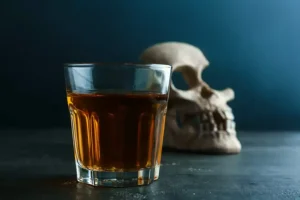In fact, one of the most significant advantages of participating in the creation of art is the ability to illustrate your emotions. Substance abuse can be extremely time-consuming. Once sober, many people find it difficult to fill all the hours they used to spend seeking and using drugs or alcohol. Take this step with an open mind and heart, ready to explore the depths of your inner world through creativity. Pay attention to how your chosen art form makes you feel. Note any shifts in your mood or insights gained through the process.
Drawing or Painting Emotions
One such common phrase is ‘level of care,’ which signifies the extent of services a patient needs. If you are struggling with addiction, it may seem like there is no end to it. Drug rehab in Payson will make addiction recovery possible for you. Recovery is undoubtedly a challenging journey, but there are better things laid out for you at…
Dual Diagnosis: Mental Health and Addiction Treatment?
- Writing offers a way to pour those feelings onto a page, creating a safe container for honesty and vulnerability that can be difficult to achieve through spoken word alone.
- Then, encourage them to make marks with colors that represent their feelings and draw and paint their problems away.
- Hayley Wilds, MA, LPC, is a licensed counselor, art therapist, and practice owner from Pittsburgh, Pennsylvania.
- The act of sculpting offers a unique way to channel the complexities of addiction recovery into a physical form.
- Drug addiction painting sessions, for instance, can help individuals visually represent their struggles and triumphs, creating powerful narratives of recovery.
- It’s important to note that art therapy for addiction should be facilitated by trained professionals.
Art has existed for millennia, both as an essential form of communication and as a means of creative expression. Today, it can still be found anywhere and everywhere. People with SUD who have previously felt defeated and isolated from the world can reconnect with it once again through art. All art forms have the ability to not only help you express how you feel but help you art therapy ideas for adults in recovery free yourself from any emotions or experiences tying you down. When I consider the importance of art therapy in the context of overcoming addiction, it’s clear that it’s much more than a mere pastime.
The Therapeutic Benefits of Creativity During the Recovery Process
- Names, demographics, and other identifying information have all been changed in order to protect client identity, confidentiality, and privacy.
- The collages can be as simplistic or detailed as the patient wishes to make it.
- Art brings people together, and whatever you choose to create will bring in new connections who can have whatever role you want them to in your recovery.
- Facilitating this art therapy activity for adults is pretty straightforward and can be done in a single session, or carried over several sessions.
- Modern Art therapy is constantly evolving, and digital media opens up a whole new world of creative possibilities.
Expressive arts therapy is a multimodal holistic health intervention that mobilizes creative expression in the service of healing both mind and body. Many people recovering from SUD are hesitant to work with others out of fear, but the end result of a group art project may be worth it. Others who see this art will wonder what the inspiration was, and you can either communicate your thoughts to them or leave it up for people to interpret.
What Does the No Surprises Act Mean for Mental Healthcare Providers?
As participants sift through magazines and photographs, they often uncover hidden aspects of themselves, leading to profound insights and self-discovery. Art therapy, at its core, is a form of psychotherapy that uses creative expression as a means of communication and self-exploration. It’s not about creating masterpieces or having any artistic skill whatsoever. Instead, it’s about tapping into the innate human ability to create and using that process as a catalyst for personal growth and recovery.
Connection to an Addiction Recovery Community
- Witnessing the art of others can foster connections and provide new perspectives on the recovery journey.
- For the purposes of this exercise, I prefer to use these small premade cardboard boxes that get assembled by hand (see below).
- Art can be therapeutic on a less formal basis, as well.
Art therapy is a common therapeutic approach used in addiction treatment. It’s also important that you are clear with your clients that you are not an art therapist, and you are not providing art therapy. However, for this art therapy activity, the contents of the box is the star so the premade option works well and saves time. Facilitating this art therapy activity for adults is pretty straightforward and can be done in a single session, or carried over several sessions. While there are countless art therapy activities for adults that could work well, these 5 art directives include some of my favorites. If you’ve had to sever ties with people who don’t encourage you to improve your own life, you may find yourself https://ecosoberhouse.com/ lonely during your recovery.





